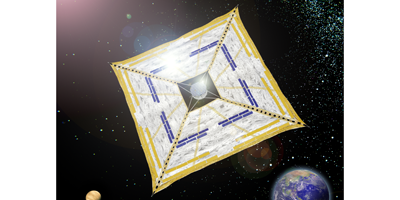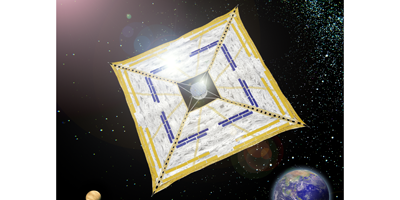Distant Bursts Show no Signs of Predicted Light Rotation
Gamma rays from cosmic explosions travel billions of light years to reach us. This makes them excellent probes of extremely small irregularities in the fabric of spacetime, as predicted by some quantum gravity theories. Along these lines, researchers have used the detection of polarization in three distant gamma-ray bursts (GRBs) as evidence that the light did not rotate during its long journey. As described in Physical Review Letters, this lack of rotation puts the most stringent constraints yet on the violation of a fundamental symmetry.
Attempts to unify gravity with quantum mechanics often predict small variations to the laws of relativity. This can open the door to violating , which is a symmetry that relates antimatter, mirror reflections, and the arrow of time. One consequence of breaking would be a speed difference between photons of one polarization and another, observable through an energy-dependent rotation of light traveling through space. Several attempts to detect this rotation have come up empty, implying that nature obeys at least to a level of one part in million.
Kenji Toma of Osaka University in Japan and his colleagues have improved on these limits using data from the Japanese IKAROS (Interplanetary Kite-craft Accelerated by Radiation Of the Sun) spacecraft. Specifically, the on-board gamma-ray burst polarimeter (GAP) has detected linear polarization in the gamma-ray emission of three GRBs. This polarization could only be observed if is respected down to a level of one part in , an improvement of eight orders of magnitude over previous model-independent limits. – Michael Schirber





